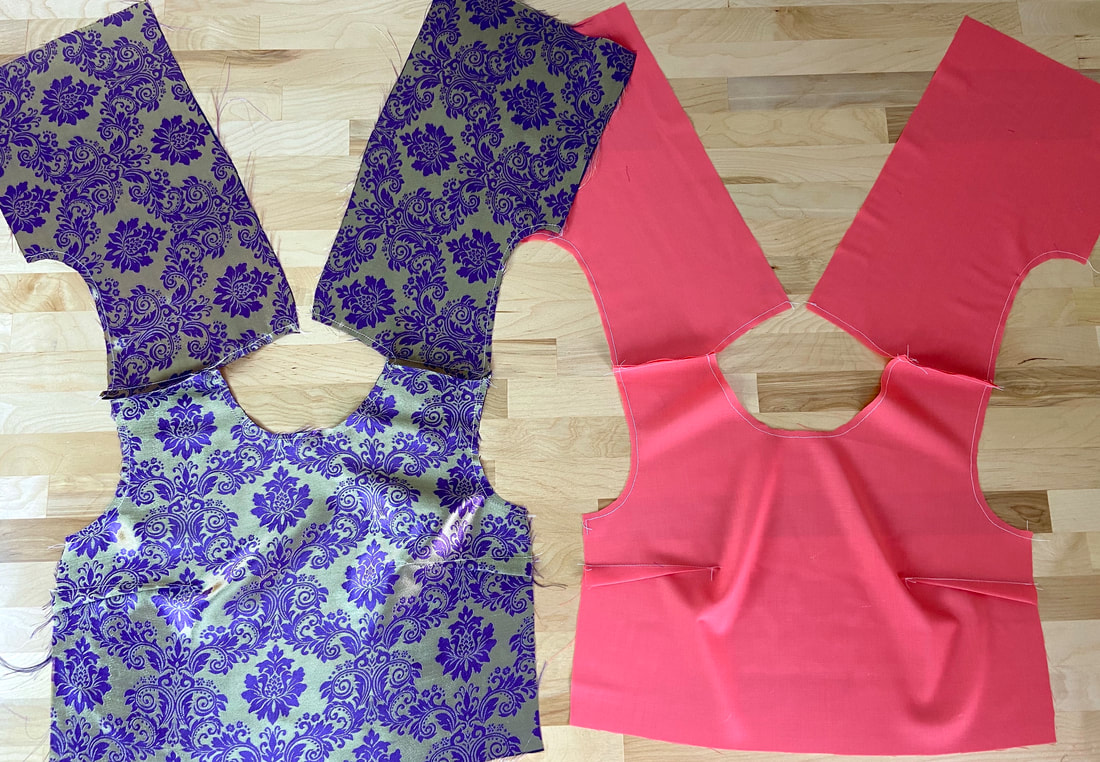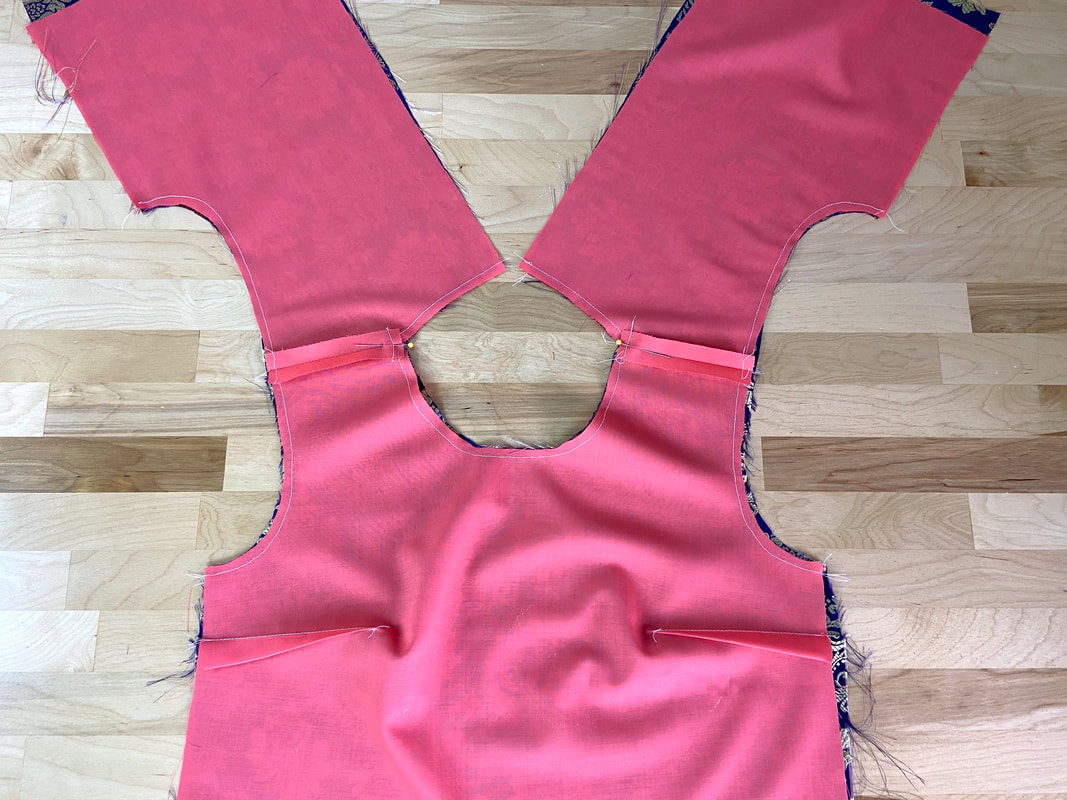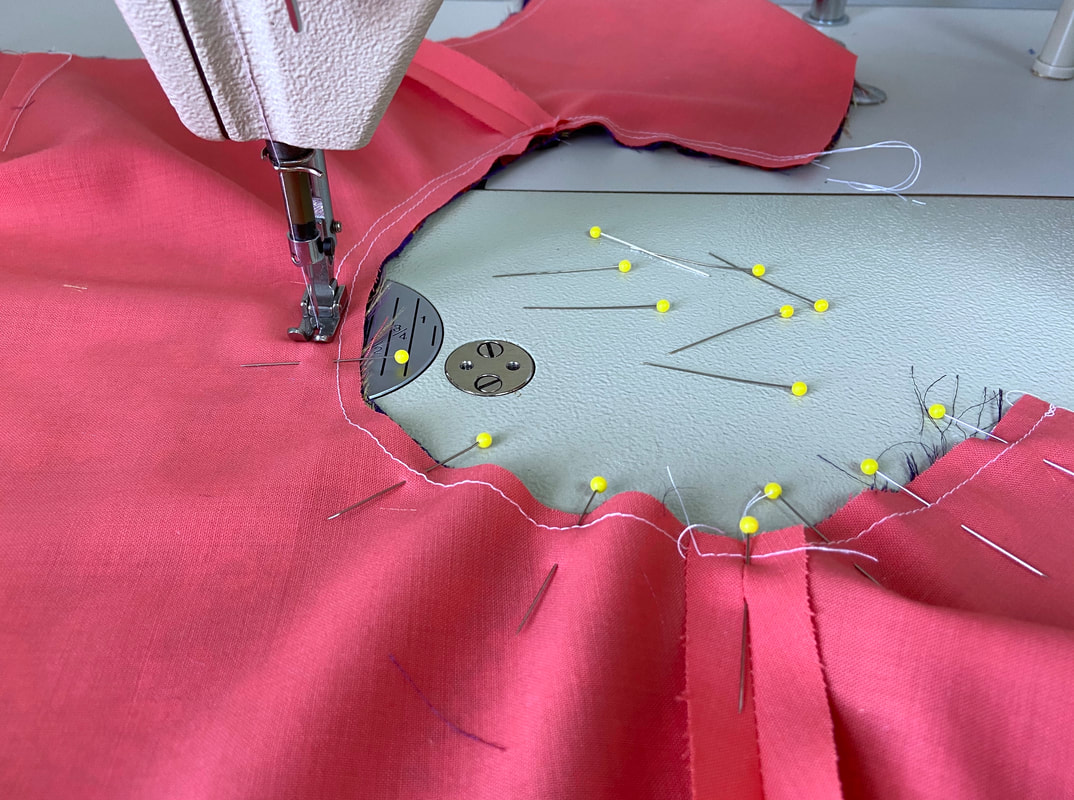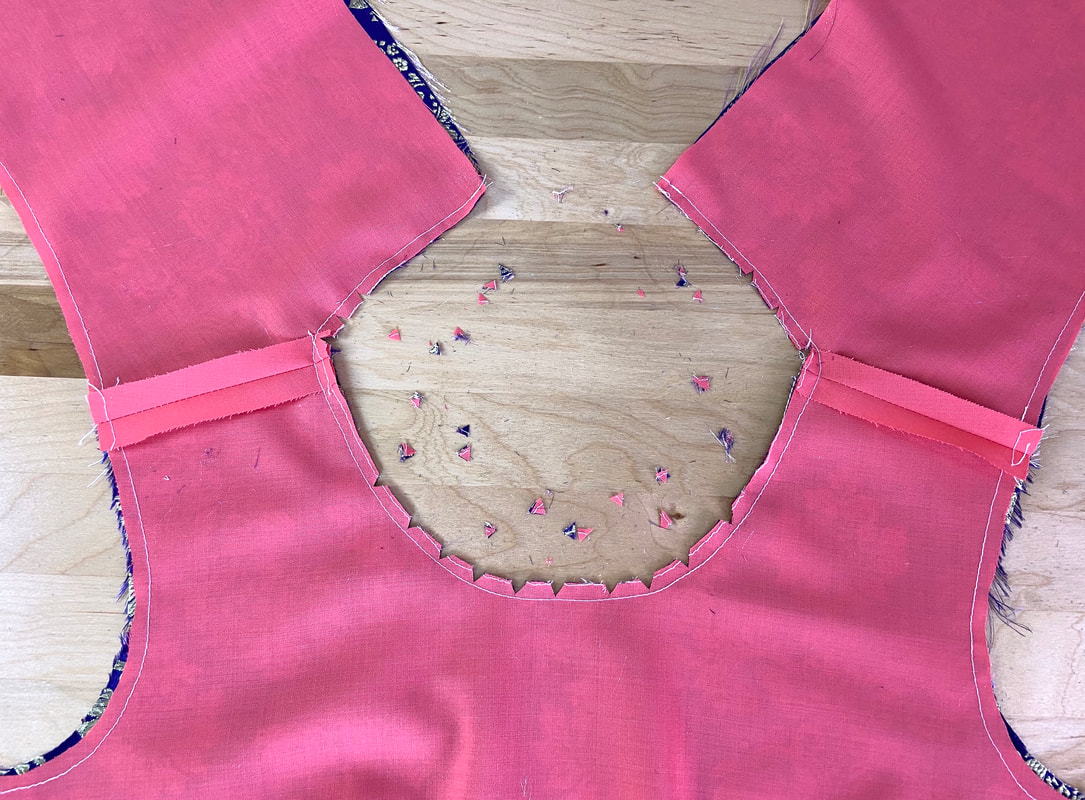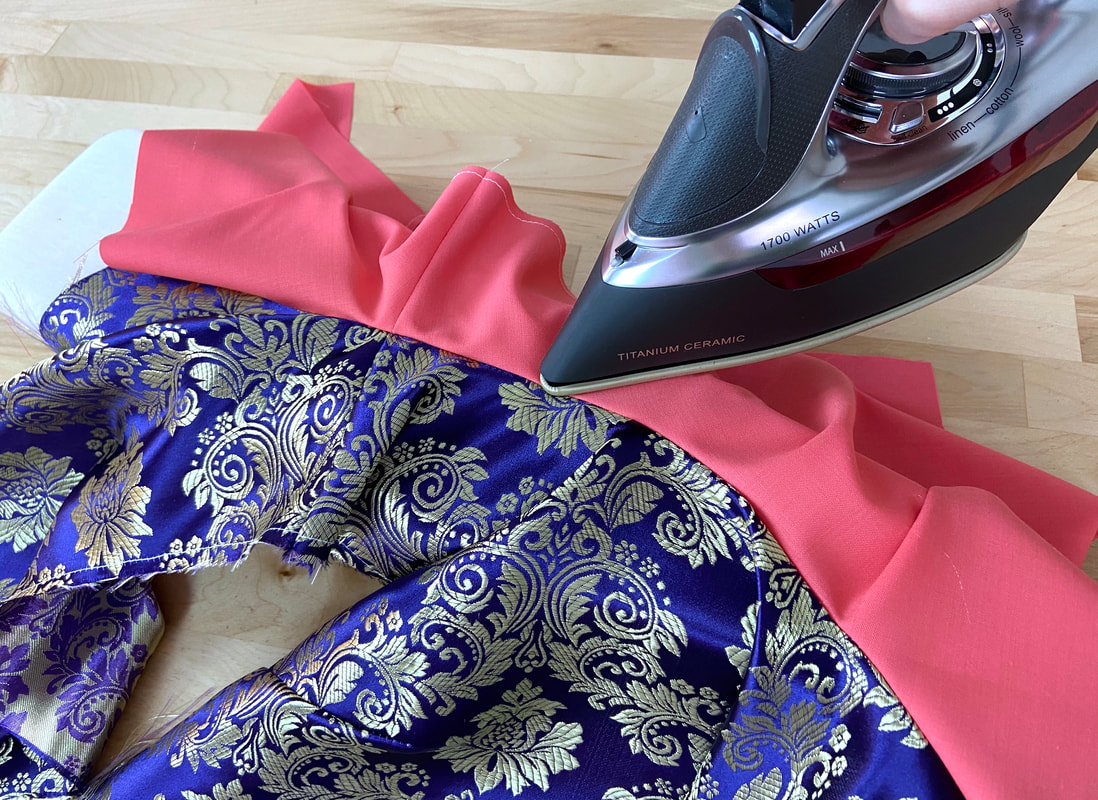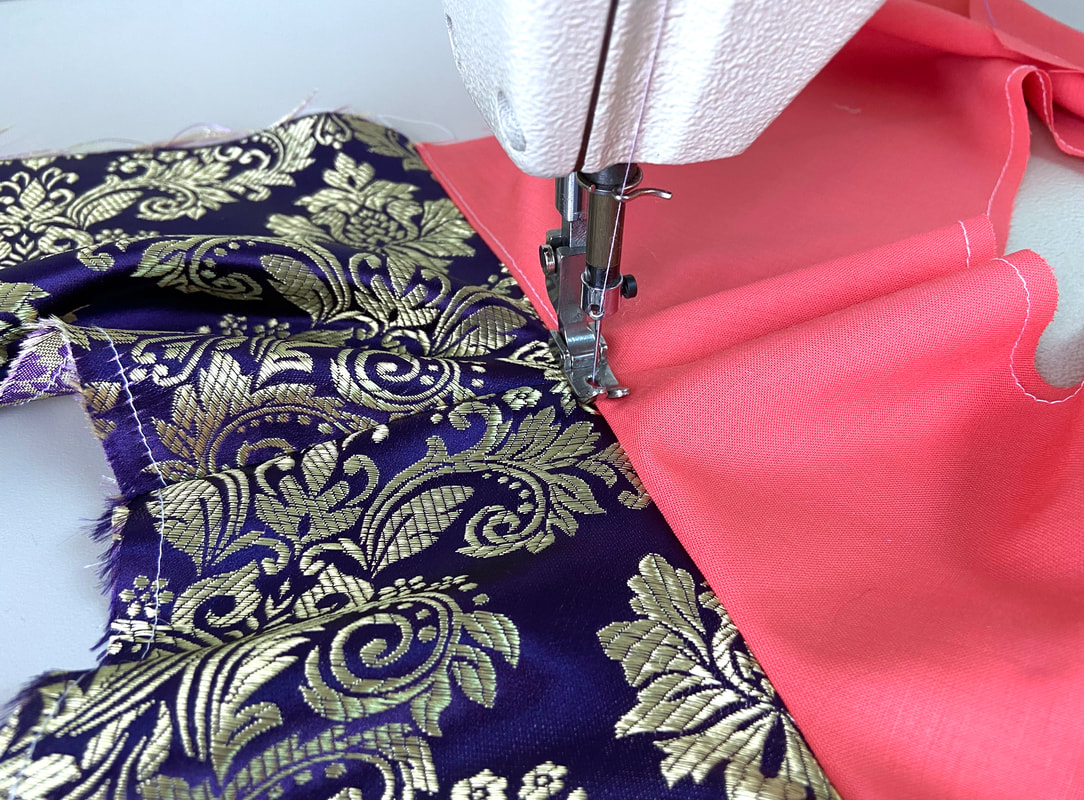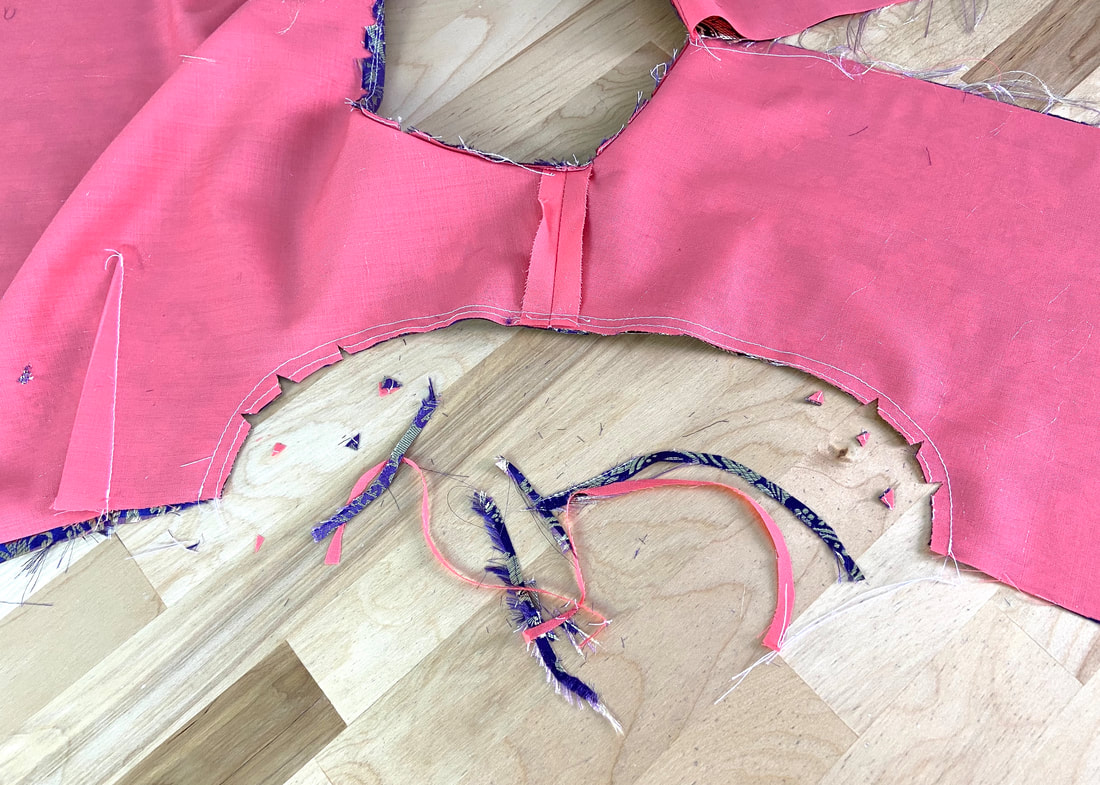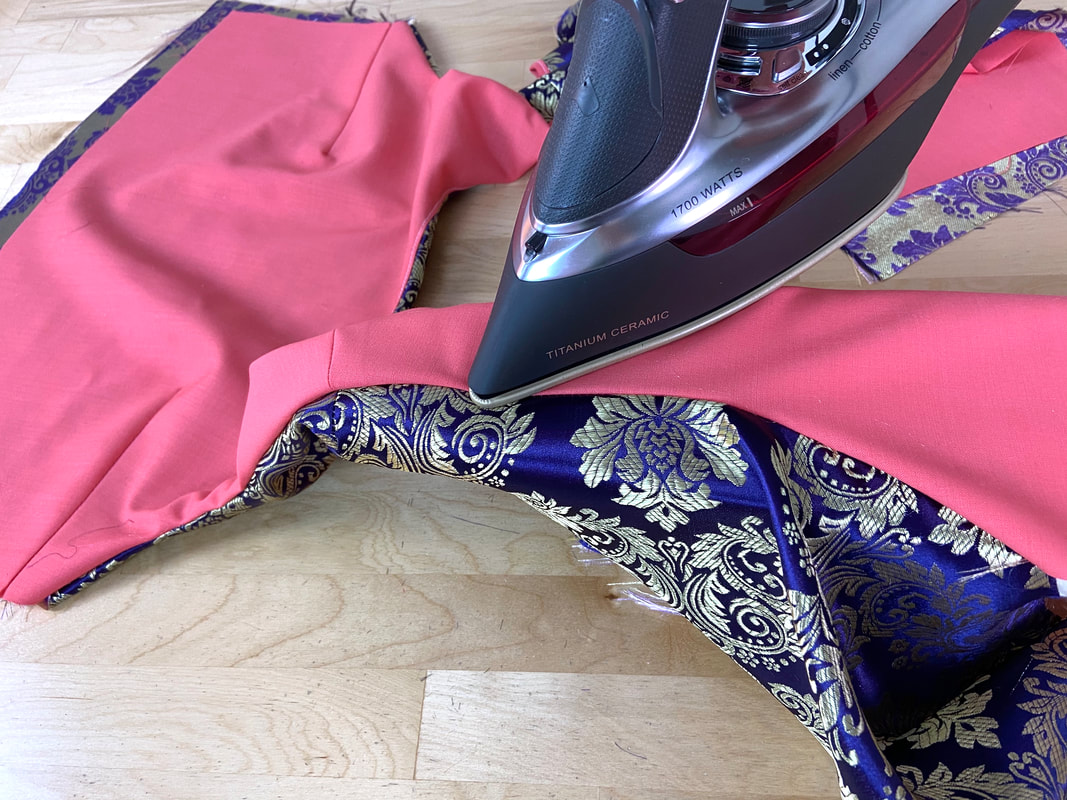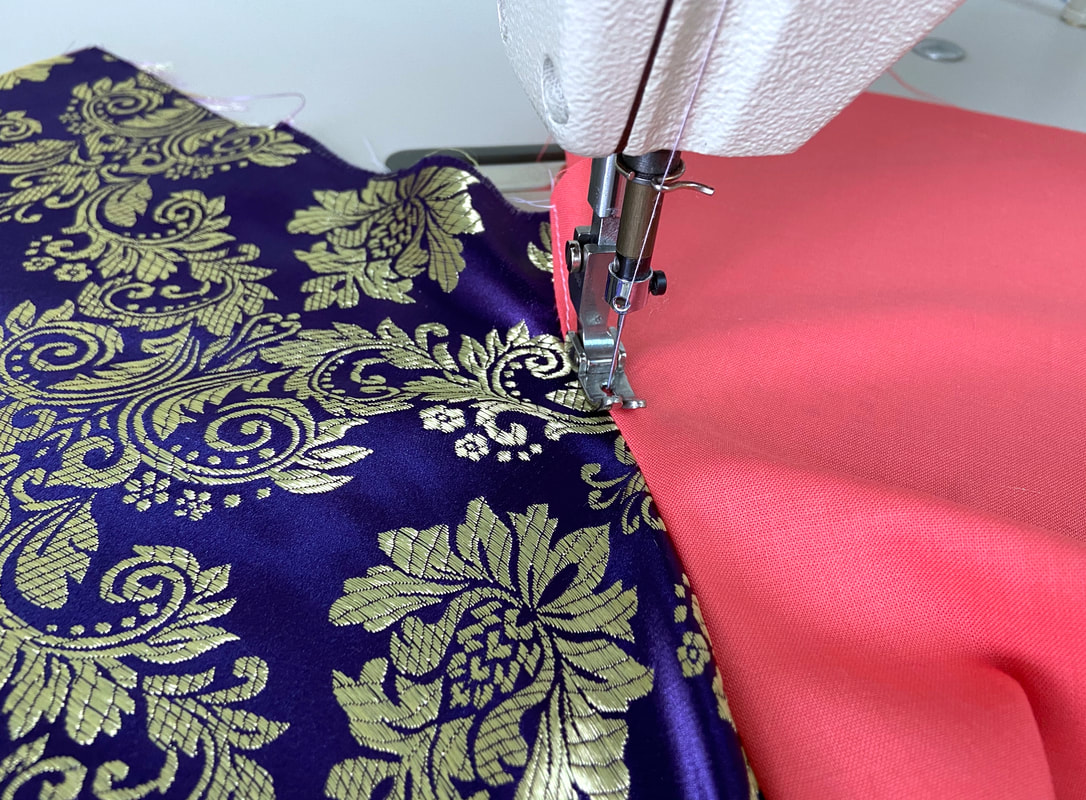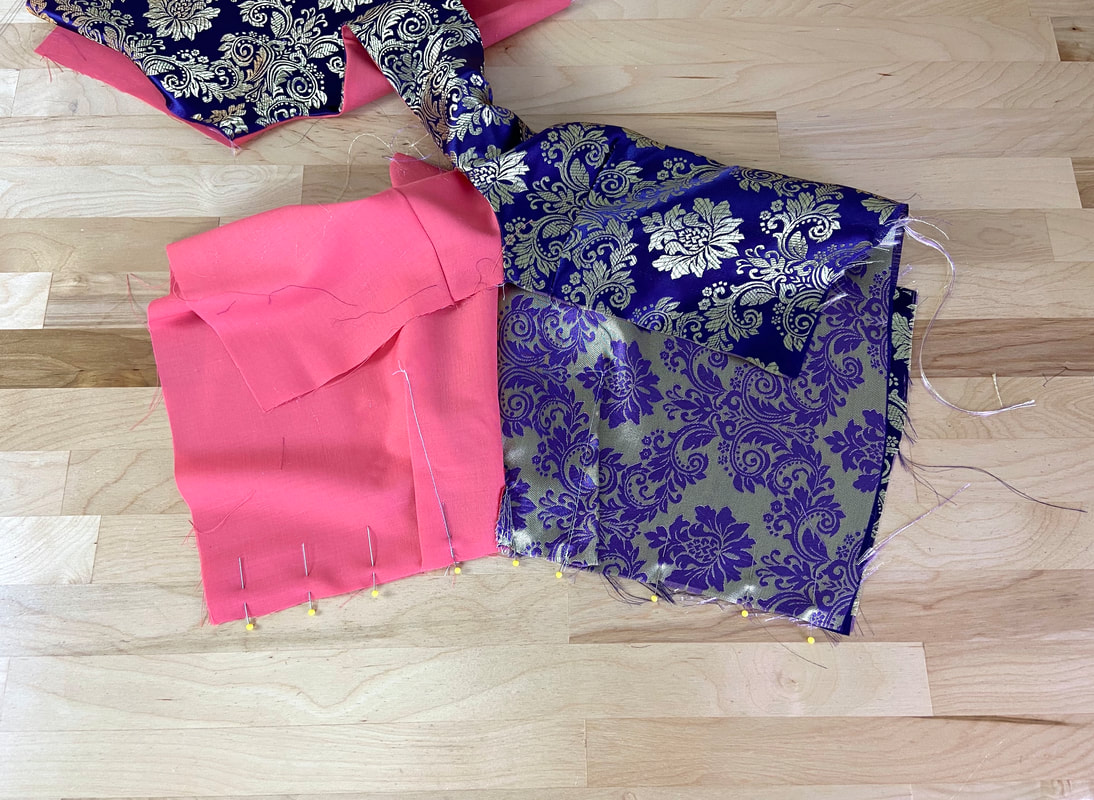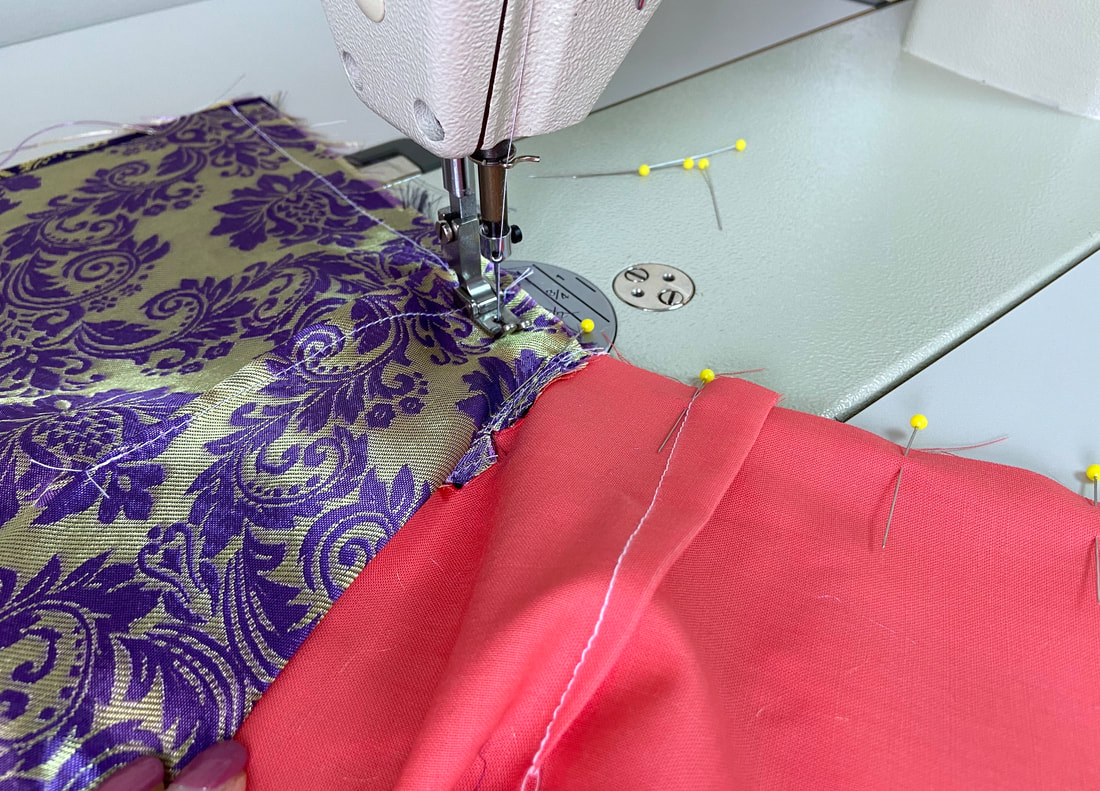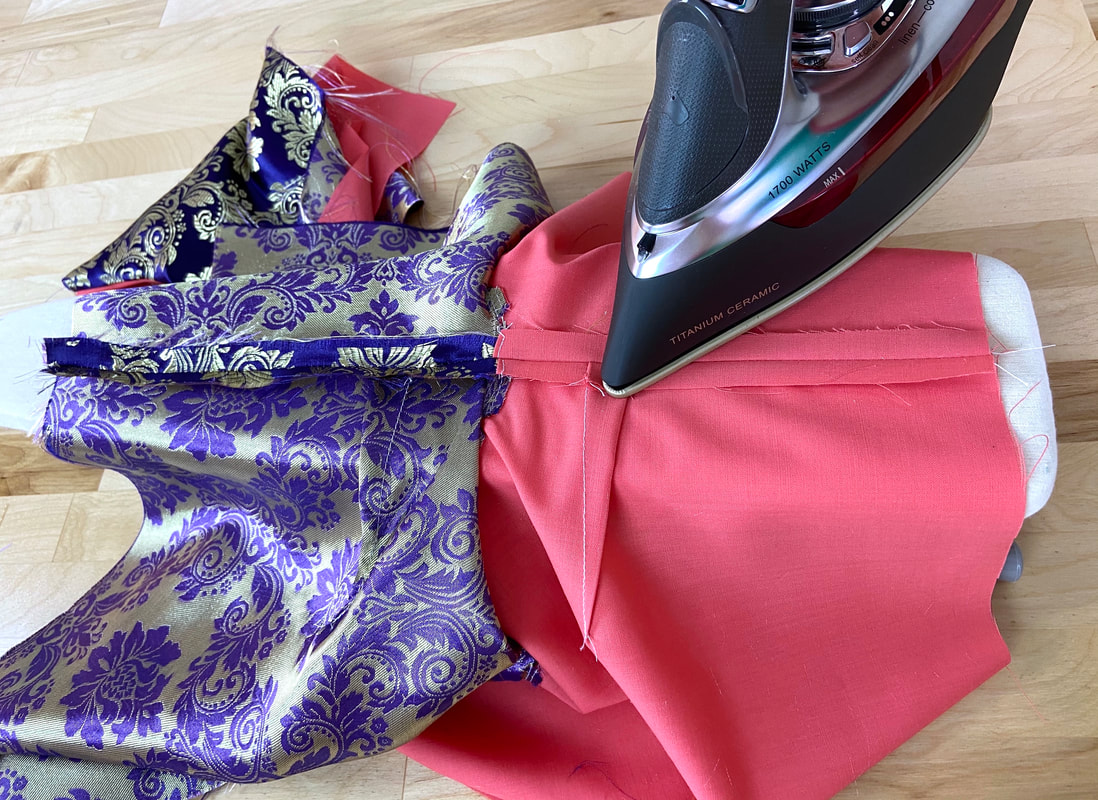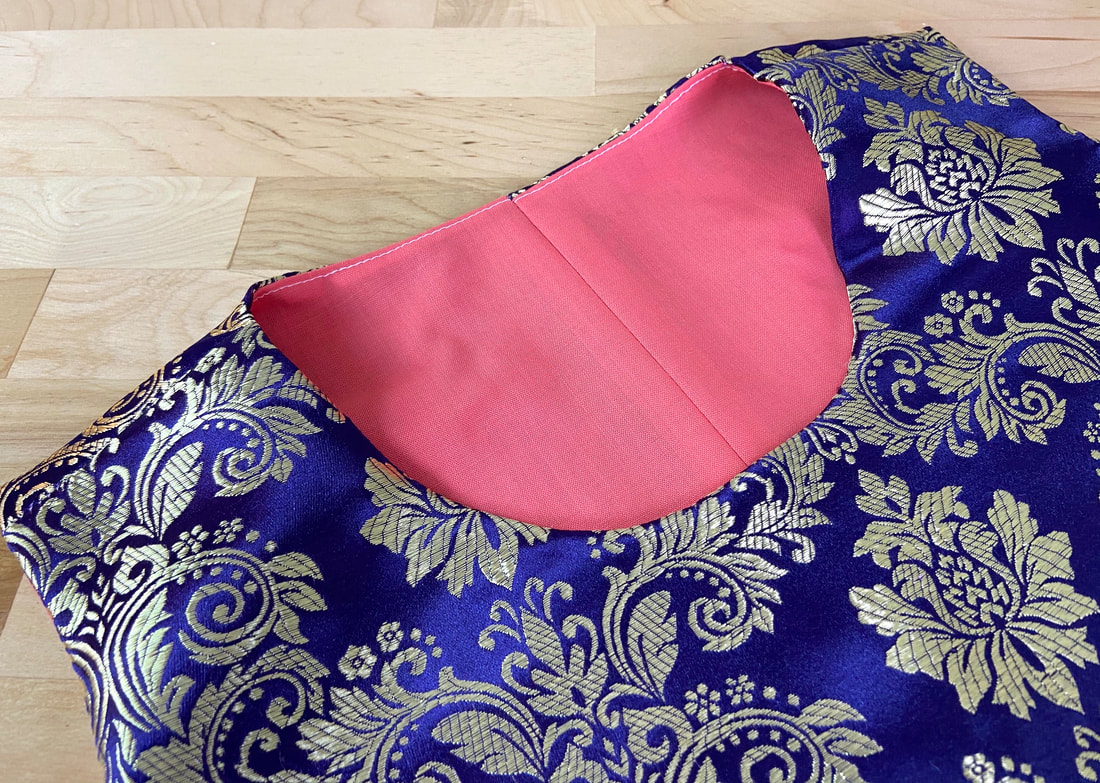Mini Tutorial: Sewing A Lined Garment With A Front/Back Seam
The technique described below can only be used with garments that have a front or back fully separating seam. In this case, the garment features a center back seam:
1. Once the garment and lining pieces are cut and their curved edges are staystitched, align the garment and lining shoulder seam edges separately and stitch them at the designated seam allowance.
2. Iron all shoulder seams with the seam allowance open and place the lining compartment on top of the garment layer with face sides touching and the armhole and neckline edges perfectly aligning. In this position, the garment's shoulder seams should align with those of the lining.
3. Pin the neckline edges horizontally (perpendicular to the edges) and stitch the neckline at the designated seam allowance - 1/2" in this tutorial.
4. If too wide, trim the seam allowance down to about half its width. Next, clip wedge notches at the curved-most area of the neckline to release tension and eliminate additional bulk. These notches should be clipped into the seam allowance, close to the seam stitch but not so close that it weakens the seam or you risk accidentally clipping the stitching.
5. From the lining's face side, iron the neckline seam with the seam allowance edges pointing away from the garment layer and aligned directly under the lining.
Understitch the neckline edge by stitching through the lining and seam allowance layers underneath at about 1/8" distance from the seamline. This stitch will stabilize the lining, preventing it from rolling to the outside of the garment and keep the neckline edge smooth and flat.
Understitch the neckline edge by stitching through the lining and seam allowance layers underneath at about 1/8" distance from the seamline. This stitch will stabilize the lining, preventing it from rolling to the outside of the garment and keep the neckline edge smooth and flat.
6. Repeat the stitching and notching process described above with each armhole seam.
7. Bring the garment to its right side through the garment opening and one of the shoulder areas as pictured above.
8. Using a sleeve board, iron each armhole edge seam with the seam allowance layers directed under the lining layers and again, understitch the armhole edges as best as you can. It is easiest to start at each garment side and move toward the shoulder seam as you understitch- you'll have to do this a few times, each time starting at the side seam opening area.
9. Now that all edges are fully lined and clean-finished, align the rest of the seam edges with face sides touching such that the garment edges and those of the lining are individually aligned. The seams separating the garment layer from the lining should also overlap and match up perfectly.
Insert pins perpendicularly to keep the edges secured during the stitching process- you should treat this as you would any conventional seam.
Insert pins perpendicularly to keep the edges secured during the stitching process- you should treat this as you would any conventional seam.
10. Starting at the garment's (or lining's) bottom edge, stitch at the designated seam allowance until you arrive at the lining's (or garment's) bottom edge. Once stitched, iron the entire seam (lining and garment) with the seam allowance edges open as shown.
11. To complete the lining application, repeat the seam alignment and stitching process with all garment seams including the side seams and center back opening.

